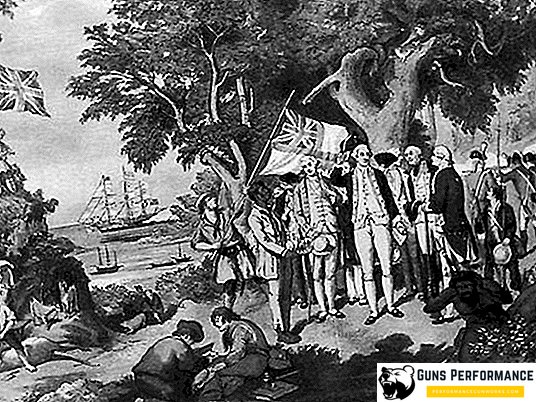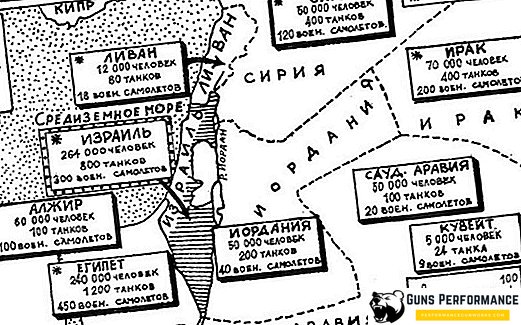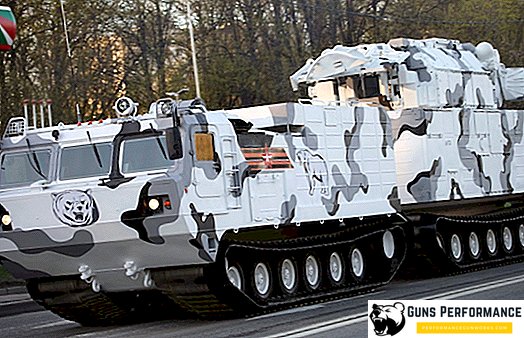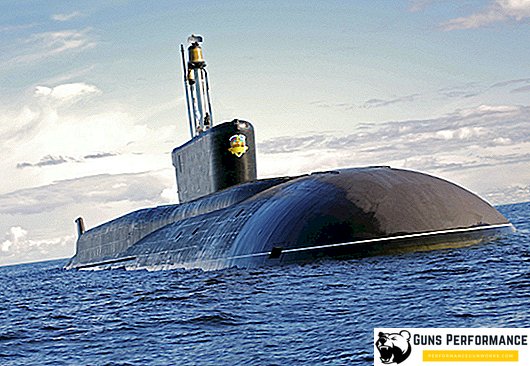The supreme ruler of Australia is the English monarch. Not everyone knows, but in this country there is also a president who is the head of the Senate. This is the main face of the upper house of parliament. The Australian Senate is made in the image and likeness of the House of Lords of Great Britain, but instead of lords there are deputies elected as a result of general elections.
The post of president of Australia is now held by Scott Ryan, and the post itself appeared in 1901. At the same time, it is necessary to clearly understand that the head of the Australian Senate is not exactly the president of Australia in the usual sense of the word.
The formal ruler of Australia is the British Queen, although her power in the country is completely limited by parliament. Currently, political analysts call Australia "the crowned republic", which fully corresponds to the real state of affairs in the state. Although residents are proud to be ruled by the queen, in reality the country is a typical republic in terms of its spirit and mode of government.
The first rulers of Australia and the goals they pursued

There are many versions of who first discovered Australia. Some scientists and historians believe that the continent was discovered in the XVI century by Portuguese sailors, who in those years plied all the seas and oceans of the world. It should be noted that although one of the tasks of the Portuguese sailors was the discovery of new lands, there is not a single document proving that the mainland was discovered by the Portuguese. It is possible that they sailed here in the XVI century, but no one in Europe has ever received confirmation of this and has not documented them. There is no doubt that the Portuguese royal court definitely would not have left such a discovery without proper attention.
The first mentions concerning the real discovery of the continent by Europeans refer to 1606. Australia has mastered the following countries:
- In 1606, a Dutch expedition led by Willem Janson landed on the Cape York Peninsula;
- In 1616, another Dutchman, Derk Hartog, landed in Western Australia. He declared these lands to be the territory of the Netherlands, but subsequently the Dutch did not begin to master this country;
- In 1606, the Spaniards sailed across Torres Bay and saw the shores of a new continent;
- The main role in the development of the Australian continent played by the British in 1788. It was then that Captain Arthur Phillip laid down the Sydney Cove settlement.
January 26, 1788 was the founding day of the capital of the state of Sydney, now it is a national holiday in the country. From that moment began the history of the colonization of these lands and the foundation of the first colony of the British Empire - New South Wales. The first British colony in Australia was very large and included the land of New Zealand. Great Britain declared its rights to the continent as early as 1829 under King George IV. In the same year, a new colony of Swan River was founded. A feature of this colony was that initially it was created as free, that is, there was not intended to use slave and hard labor.
Over the years, New South Wales, according to the decrees and orders of the English monarchs, was divided into several colonies, among which were:
- South Australia was founded in 1836 under King William IV;
- New Zealand was founded in 1840, when the famous Queen Victoria was already on the royal throne;
- The next colony was named after the queen - Victoria. It was founded in 1851;
- Queensland was founded in 1859;
- In 1863, the Northern Territory was founded, which until this time was considered part of South Australia.
At first, the British Empire sent convicts to the colonies, since there was no one to work there. Some of them managed to work out their time, get the land and continue to work for themselves. Most of the Europeans, who were criminals and spent their whole lives in large English cities, could not stand, were sick and died. The stream of criminals was reduced by 1840 and was completely stopped in 1868.
Since the habitable land in Australia is located primarily on the coast, the colonialists began to gradually expand and build new settlements along the entire coast. Huge areas were cleared of shrubs and forests and began to be used in agriculture.
Colony Self Government and Australian Gold Rush

In 1850, the whole continent was in a gold rush, as gold was found in the country. These events provoked a huge number of immigrants who poured into the country in the hope of rapid enrichment. People traveled mainly from the following countries:
- North America;
- Ireland;
- Great Britain;
- China and other European and Asian countries.
In 1854, gold miners, who were tired of paying the British crown for licenses for gold mining, raised a rebellion, known as the Eureka. The reason for the uprising was the murder of one of the prospectors by the owner of the hotel, where he stayed. The rebels burned the hotel and began to demand from the authorities the following measures:
- Cancellation of licenses for gold mining;
- Granting colonies the right to self-government;
- Opportunities for holding open and general elections to parliament.
Although the uprising was subdued, the authorities still learned a lesson from it. In 1855, reforms were carried out, as a result of which New South Wales gained self-government. Legally, the colony remained under the rule of the British Empire, in fact, management passed into the hands of the government, which was elected as a result of general elections. Further, the following colonies obtained the right to self-government:
- Victoria;
- Tasmania;
- South Australia. The first three colonies obtained their rights in 1856;
- Quisland acquired the right to self-government at the time of its formation, in 1859;
- In 1890, Western Australia gained similar independence from the crown.
From this point on, most of the issues relating to the internal affairs of a state passed into the hands of an independent government. Britain remained in charge of foreign policy, foreign trade and defense issues.
After a powerful economic surge caused by the discovery of gold in the country, a slow recession began, which seriously hit the workers in Australia. During these years, many workers' parties were created that fought for the rights of workers. In 1901, all the Australian colonies were united into a union, which was the dominion of Britain. In 1932, Australia was covered by a wave of the strongest crisis, since the entire economy of the country was based on the export of wool and grain, and this product was unclaimed at that time. The unemployment rate in the country in 1932 reached 29%, which had never happened before.
Although the country's main law was the Constitution of 1900, which began to operate in the country in 1901, the country became virtually independent of Great Britain in 1942. This was due to the Westminster Statute of 1931, which Australia ratified only in 1942. Despite this, the Queen of England is still the formal ruler of the state, and Australians are justly proud of it.
Queen of Australia status

Currently, the monarch of the country is Queen Elizabeth II. Her reign began in 1952. The entire royal family is often in Australia, where it performs various official and ceremonial duties inside and outside the country. Despite the fact that the role of the queen is formalized by the Constitution of the country, most of the duties of the monarch are performed by the Governor-General, who is the official representative of the royal house in Australia. In addition, each state of the country has its own governor, who is appointed by the queen. When a monarch happens on the territory of a state, all powers of the governor are transferred directly to him.
The Queen of Australia is the monarch of fifteen countries that are considered the Kingdom of the Commonwealth. The laws separately stipulate that the Queen is represented in Parliament by the Governor-General, and all executive functions are entrusted to the Cabinet of Ministers. The main responsibilities of the Queen is to represent the country at various social events in the country and the world.
Duties of the Governor-General of Australia

The main representative of the royal power in Australia is the Governor-General. He is appointed according to the orders of the queen. All the power of the monarch at the time of his absence in the country is in the hands of this representative of the government. The role of the governor-general is as symbolic as the power of the queen, but all government agencies in Australia function on behalf of this representative of the government.
All functions of the monarch relating to military policy, in fact, are in the hands of ministers. They can use the royal prerogative of the following questions:
- Rights to declare war;
- Rights to make peace;
- The command of the country's armed forces is also in the hands of Australian ministers.
The rights of the Governor-General stipulate that he can call elections, as well as convene and dissolve parliament. In practice, the representative of the royal government never uses its rights without the approval of the Prime Minister. The last intervention was recorded in 1975, when the Governor-General intervened in politics in the midst of a sharp constitutional crisis.
The Prime Minister must be appointed as the representative of the monarch of Australia, but this right is limited by special laws, which stipulate that only the person who will receive the support of the majority of the members of the House of Representatives can be appointed as the head of government. The same documents stipulate that in the case when representatives of parties and coalitions get the same number of votes, it is the governor-general who can nominate a candidate.
The main paradox of the role of the Governor-General in the Australian government is the fact that he, although appointed by the monarch of Great Britain, is fully accountable to parliament. Despite all the restrictions, the representative of the Queen of England is officially considered the head of the executive authority throughout the Union of Australia. The duties of the Governor-General include the following powers, part of which he does not use, as has been said above:
- To appoint ambassadors, judges, ministers;
- Approval of bills;
- Announcement of the election;
- Presents government awards;
- Performs a wide range of different ceremonial duties.
In addition, the Governor-General often makes representational trips abroad. In this case, it is adopted at the level of the head of state. The deputy to the royal authority in Australia is the official secretary. Since 2014, the governor-general of Australia is Peter Cosgrove.
Australian Parliament and its role in government

The functions of governing the country are vested in the Australian Parliament. It consists of three main components:
- Monarch, whose representative is the Governor-General;
- Senate, whose head is its president. Senators are elected for a six-year term, while every three years the composition of the senators is updated by half. There are 76 people in the Senate, 12 from each state;
- House of Representatives. The election of deputies to this authority occurs once every 3 years. There is a possibility of election for several terms in a row.
The symbolism of both houses of parliament features the power of the Crown, but the queen herself does not participate in the creation and adoption of laws. Despite this, each new parliamentary session begins with a Trone speech, which must be delivered by the monarch himself or the governor-general.
All laws that are passed in Parliament must be approved by the Governor-General or by the appropriate Governor of the state in which the law will apply. Also, laws must be affixed with the Great Australian Seal or official state seals. Australian legislation stipulates that the Governor-General may refuse to Parliament to approve any bill. Moreover, the interpretation of this deviation sounds like "for the pleasure of the Queen." In addition, the Queen of the country can reject any Australian project within a year, after its approval by the Governor-General. In practice, the monarch and his representative have never exercised this right.
The judicial system of Australia is also carried out on behalf of the monarch, while he personally never performs judicial functions. All court sessions are held in the traditional form and begin with the words "The Supreme Court of Australia sits. God Save the Queen." Criminal proceedings are conducted with the defendant on behalf of the royal power and are held in accordance with the formula "Queen against (name)" or "Crown against (name)".
The queen herself cannot be the object of prosecution, and the law states that the monarch is always right. Despite this, it is possible to initiate proceedings against the Crown, which in fact means initiation of proceedings against the government.
President of the Australian Senate and his duties

The Senate of Australia will begin work only if a president is chosen among the senators. If the position of president is vacated, members of the Senate are obliged to choose a new chapter, which must be a senator. The removal from office of the president can be made in the case of:
- If the majority of members vote to remove him from office;
- The president can independently refuse a post. At the same time, he is obliged to send a written notice to the Governor-General.
The election of the President of Australia takes place by secret ballot of members of the Senate. The representative of the dominant party is always elected to the position of head of the Senate. To avoid problems with the opposition, the vice-president is elected from among the opposing party. In 2005 and 2007, the Green Party tried to nominate Kerry Nettl to the position of Deputy Head of the Senate, but no one supported this nomination.
Do not confuse the president of the parliament with the current leader of the state. It is rather a ceremonial post. The main duties of the head of parliament are:
- Maintain order during parliament meetings;
- Protect the rights of ordinary senators;
- Ensure compliance with the regulations.
In addition, the President, together with the Speaker of the House of Representatives, corrects the work and functioning of the parliament building with the help of administrative staff.
Residence of the President of Parliament

In Australia, there is no such thing as a presidential reception room, because the head of parliament is not engaged in receiving delegations or citizens. The residence of the President can be considered the building of Parliament. The country has an old and new parliament building. The old building was opened in 1927, when the federal parliament moved to Canberra, which became the new capital of the state.
The old Australian Parliament is located on the shores of Lake Griffin, and is surrounded by a green lawn. The parliament building was built over 4 years and was opened in 1927 by the York Dukes, who became the monarchs of Great Britain. Although this building is no longer used for its intended purpose, it is maintained in good condition and is one of the attractions of the Australian capital.
The construction of the old Australian parliament building began in 1923. The construction was completed in 1927, and in the same year the parliament moved there. Materials from all over the country were used for construction, besides, the best architects were involved in creating the project. It was originally planned that the Australian government will be here for no more than 50 years, but in fact it has been there for more than 60 years. This was the result of the economic crisis of 1932 and the consequences of the Second World War, in which Australia participated on the side of the countries of the anti-fascist coalition.
Перед началом строительства здания парламента Канберра была небольшим городком местного значения, но переезд правительства спровоцировал огромный поток людей, которые хотели обосноваться именно здесь.
В 1978 году было решено строить новое здание парламента. Для этого был объявлен конкурс на проект лучшего здания для парламента Австралии. В конкурсе участвовали ведущие архитекторы из 29 стран мира. Всего было выслано 329 работ, соответствующих условиям конкурса. Победителем была объявлена фирма из Филадельфии.
Строительство нового здания австралийского парламента было начато в 1981 году, а завершить строительство планировали 26 января 1988 года, в день 200-летия основания первой английской колонии на территории континента. Изначально планировалось вложить в строительство около 220 000 000 австралийских долларов, но в итоге смета превысила сумму в 1,1 миллиарда. Сроки открытия также не удалось соблюсти, и здание было введено в эксплуатацию 9 мая 1988 года. Эта дата была приурочена к годовщине открытия первого федерального парламента в Мельбурне.












